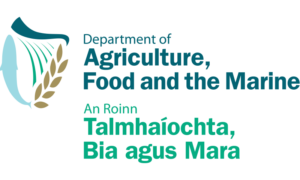Policy Recommendations
Policy Note- Pesticides, Pollinators and Soils
Over 5 years 12 researchers from four Irish universities, have studied the impacts of widely used pesticides in Ireland on soil residues and pollinator health using an array of experimental and data analytical methods. Here we present the central recommendations.
- Pesticide usage data should be standardised across the EU to make it available for risk assessment, scientific research, and to allow tracking of Farm to Fork targets. It should be collected from all sectors that use pesticides (domestic, forestry etc), not only agriculture.
- Residues of some persistent pesticides have been detected in soils and flowers long after they were applied, presenting a continued exposure risk. Hence, we recommend applying greater regulatory scrutiny to pesticides with long half-lives, and not approving derogations for banned substances with long half-lives (e.g. neonicotinoids).
- Post-approval monitoring of pesticides would help build a real world understanding of how their use impacts wildlife. Monitoring pesticide residues in flowering crops, wild plants and bee products in farmland would allow for a better understand of real-world residue levels.
- Supplementing regulatory research, more support and funding for the testing on the impacts of non-insecticides is required, as we found considerable knowledge gaps here.
- We found that fungicides and herbicides tested could cause some degree of harm to bees, although more research is needed to assess overall hazard and risk in the field. So, the Farm to Fork proposal to reduce pesticide use by at least 50% by 2030 would ensure a precautionary approach in alleviating pesticide pressure on pollinators.
- Several of our experiments have found impacts of pesticides on bees health that go beyond mortality, and operate over longer time scales. The mortality centric approach is failing to recognise effects of herbicides and fungicides on learning, physiology and reproduction. This suggests that all pesticides should be entered into higher tier risk assessment.
- To expand toxicity testing to more species (currently there is a strong honeybee bias, while impacts on other pollinators may not be the same).
- Co-formulants (pesticide ingredients other than active ingredients) and adjuvants (separate tank additives) need to be assessed for pollinator safety and included in residue analysis. We found co-formulants can modify the toxicity of pesticides in certain situations.
- To reduce the impacts of pesticides on biodiversity and achieve pesticide use targets a wider scope of action is needed. Different sectors of use (amateur, local government and forestry), risk assessment and landscape level redesigns of farmland all warrant consideration.
- Collation of Irish pesticide product datasets found 876 professional and 275 amateur pesticides, if this number were limited it would facilitate more testing of their safety.
- The mitigation measures attached to pesticide use and bees largely lack empirical support and may be ineffective. We would propose that more research into their efficacy is needed, but generally they should not be relied upon to in pesticide approvals.
- The mitigation measure attached to the most bee toxic pesticides of ‘do not apply during bee foraging periods’ is unlikely to be effective, and as revealed by a survey, is not well adhered to. We recommend this mitigation measure be re-evaluated.
- A survey of farmers compliance with pesticide rules found good compliance in most areas relevant to pollinators, although more education and enforcement is needed to promote tank washing and emptying between sprays, and proper disposal of pesticide waste. Compliance was lowest in areas to do with promoting farmer health (e.g. wearing of PPE).
